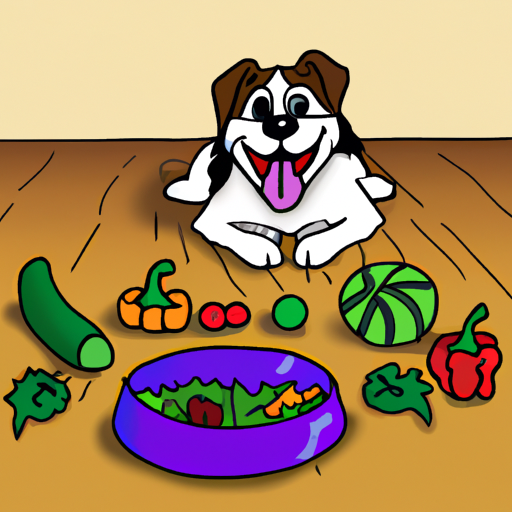As a caregiver, understanding the dietary needs of your furry friend is fundamental. So, you may often wonder: “What vegetables can dogs eat?” This guide will help you gain a clearer understanding.
H2: The Safe Vegetables
Your dog can safely enjoy a variety of vegetables. Here are some examples:
- Carrots: A great source of vitamins, fiber, and potassium.
- Broccoli: High in fiber and vitamin C but should be given in moderation.
- Brussels Sprouts: Rich in nutrients and antioxidants, but can cause gas.
- Cucumbers: A low-calorie snack that’s perfect for overweight dogs.
- Celery: Helps freshen doggie breath and is also filled with vitamins and nutrients.
| Vegetable | Benefits | Precautions |
|---|---|---|
| Carrots | Vitamins, fiber, potassium | None |
| Broccoli | Fiber, vitamin C | Give in moderation |
| Brussels Sprouts | Nutrients, antioxidants | Can cause gas |
| Cucumbers | Low calorie | None |
| Celery | Freshens breath, vitamins | None |
H2: The Vegetables to Avoid
Just as there are safe vegetables, there are also those you should avoid:
- Onions and Garlic: These can damage a dog’s red blood cells, leading to anemia.
- Mushrooms: Certain types can be toxic to dogs.
- Tomatoes: The green parts of the tomato plant are harmful to dogs.
H2: Preparation of Vegetables
When feeding your dog vegetables, preparation is key. Here are some tips:
- Wash all vegetables thoroughly to remove any pesticides.
- Cook the vegetables to make them easier for your dog to digest.
- Cut them into small, manageable pieces to prevent choking.
H2: Serving Size and Frequency
Remember, moderation is key. Vegetables should make up no more than 10% of your dog’s daily caloric intake. Also, introducing new food should be done gradually to avoid upsetting their stomach.
H2: Consulting with a Vet
Before making any major changes to your dog’s diet, it’s always advisable to consult with a vet. They can give you personalized advice based on your dog’s breed, age, and health condition.
Frequently Asked Questions
Q: Can my dog eat raw vegetables?
A: Yes, but cooking them makes it easier for the dog to digest.
Q: How often can I feed my dog vegetables?
A: Vegetables should not make up more than 10% of your dog’s daily intake.
Q: Are there any vegetables that are toxic to dogs?
A: Yes, onions, garlic, certain mushrooms, and green parts of tomatoes are toxic to dogs.
Q: Should I consult with a vet before changing my dog’s diet?
A: Yes, it’s always best to consult with a vet before making any major changes to your dog’s diet.
Understanding what vegetables your dog can eat is a step towards providing them with a balanced diet. With this guide, you can make informed decisions about your pet’s nutrition.



